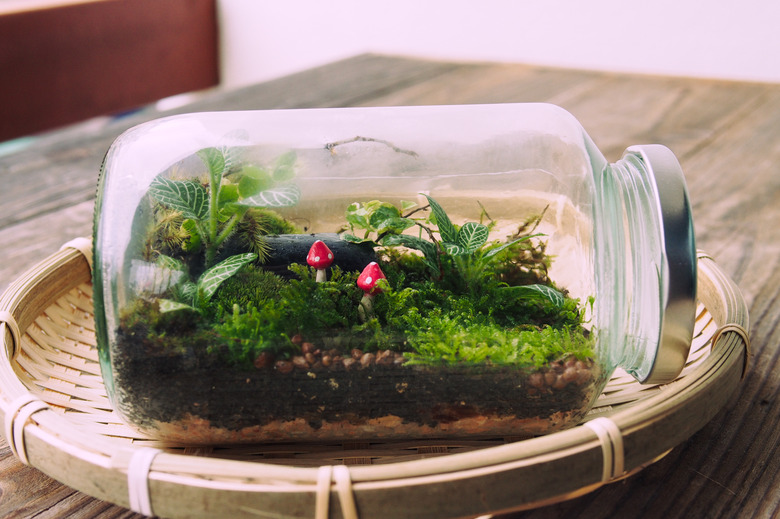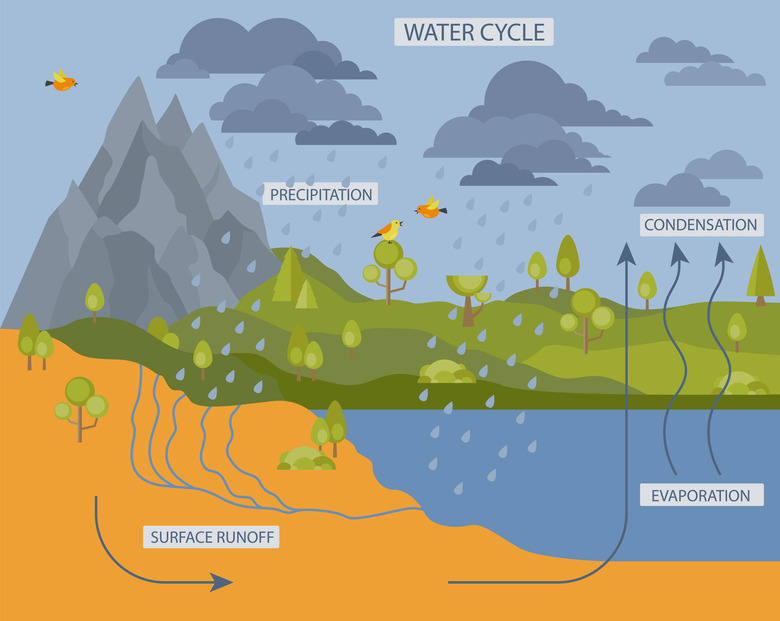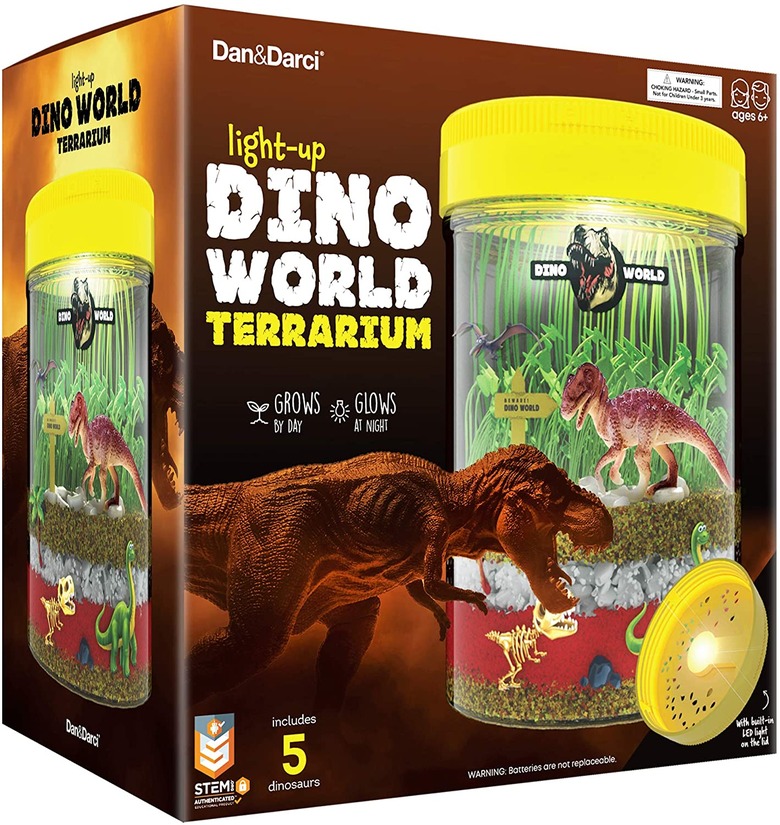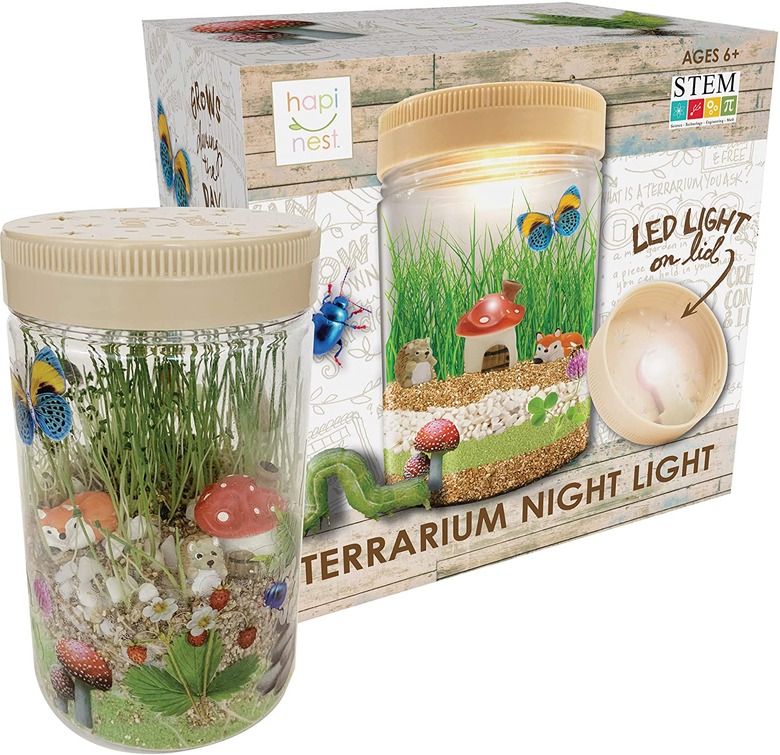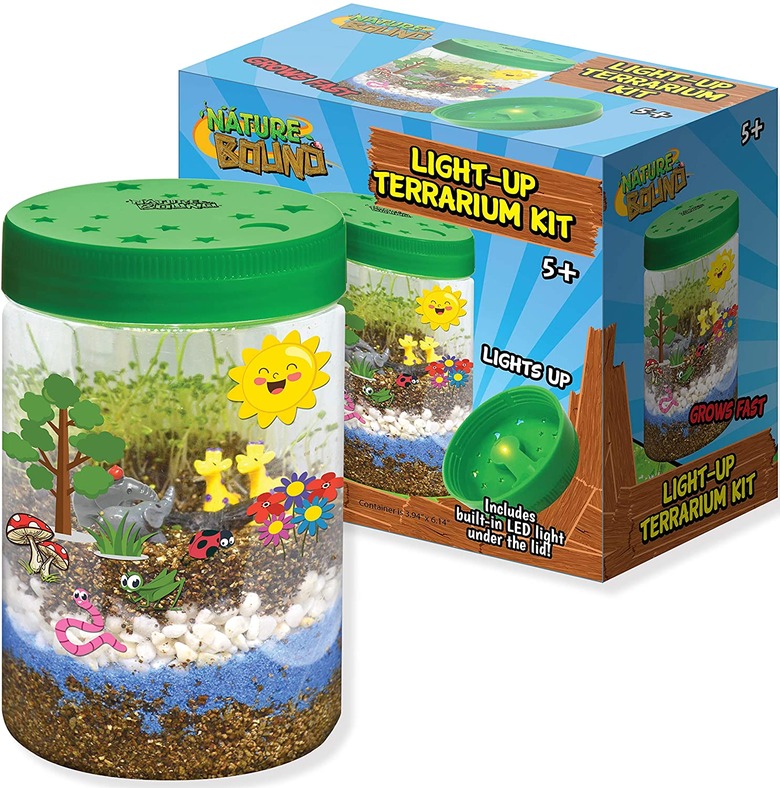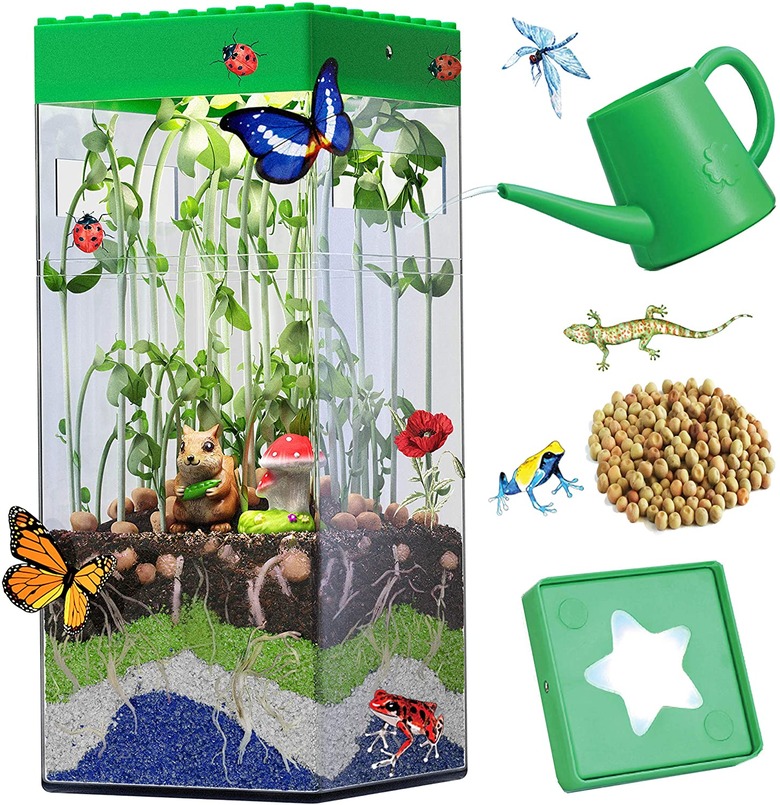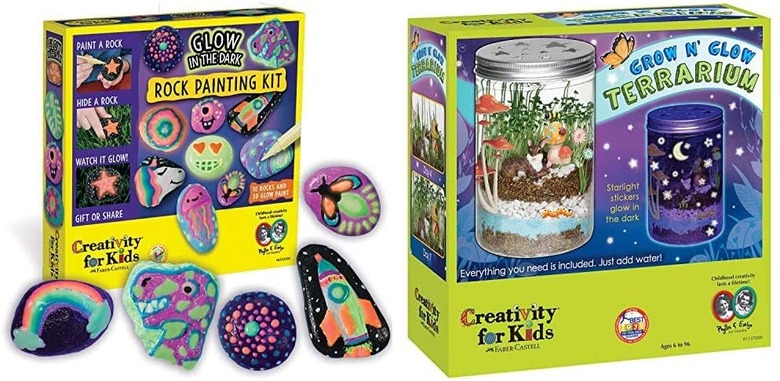Create A Mini-Ecosystem At Your Desk With A Terrarium Kit
We may receive a commission on purchases made from links.
If you find your mind wandering to the great outdoors when you're inside studying, we've got good news: Thanks to science, you can create a miniature "outdoors" in your room.
Meet the terrarium: a self-contained ecosystem that allows you to grow plants easily indoors. While you can, of course, grow other plants, you need to keep a close eye on them to make sure they're watered – otherwise, they'll dry up and die.
A terrarium is different, though. It's set up to mimic the water cycle that occurs in nature, to help you grow plants without all the work. Here's the science behind how it works, and a few must-have kits to create an amazing terrarium indoors.
First, What Is the Water Cycle?
First, What Is the Water Cycle?
The term "water cycle" might ring a bell, because it often comes up in science class. But here's a refresher: The water cycle refers to how water is recycled throughout the environment. Think of it as a life cycle for a drop of water – what happens to that water over time as it moves through an ecosystem.
Now let's get more specific. The water cycle has four stages:
1. **Water falls as precipitation.** We've all been caught in a rainstorm or snowstorm, which makes this maybe the most noticeable stage of the water cycle. Water from the clouds falls to earth. If it's liquid water, it falls as rain; if it's frozen, it falls as snow, hail, sleet or ice. 2. **Water creates surface runoff.** All that falling water has to go somewhere – and if you've ever seen how rivers rise after a massive rainstorm, you have a good idea of where it goes. Precipitation runs off into groundwater, joins rivers and streams, or rests on the ground. 3. Runoff water evaporates into water vapor. Of course, the water doesn't just sit there forever – soaked pavements dry off, and raging rivers eventually go back to normal. That happens because water on the earth's surface transforms from liquid to gas and becomes suspended in the air around us. FYI, the term for the amount of water suspended in the air is humidity. So if you've ever been outside on a humid day, and noticed how damp the air feels, there's a good reason – it's filled with evaporated water! 4. **Water vapor condenses into water.** As that humid air rises higher in the sky, the temperature drops. And, eventually, it becomes so cold that the water vapor turns back into liquid, a process called condensation. Condensed water in the sky forms clouds and, when the time is right, the water in those clouds falls as precipitation, repeating the cycle.
Why Is the Water Cycle Important?
Why Is the Water Cycle Important?
We need water to survive, and the water cycle helps keep water on Earth. Think about it – if water didn't fall as precipitation, it would eventually all collect in the clouds, leaving Earth dry as a bone. Or if water couldn't condense and move back into the atmosphere, each rain would soak the Earth permanently, leading to major flooding.
That's why it's so important for ecosystems to be set up around the water cycle. Too much deforestation, for instance, can remove soil that rain water would otherwise soak into, leading to flooding. A canopy of trees also keep the sun's rays off the ground, slowing evaporation; so when you cut too many trees, evaporation happens too quickly, and long times without rain can cause serious droughts.
Over time, the temperature shifts caused by climate change and deforestation lead to disruptions in the water cycle. That's part of why major water-related climate events, like floods, are likely to become more common as the climate changes – and why slowing climate change is so important to our safety.
Got It? Here’s What it Has to Do With Terrariums
Got It? Here's What it Has to Do With Terrariums
While the water cycle happens outside on a massive scale, you can also create a water cycle on a small scale using a terrarium. Because terrariums are relatively closed off, they're able to recycle some water, so you can grow plants without too much effort. Think of them as miniature greenhouses: they help grow plants who would normally thrive outdoors inside.
Here's how it works. You assemble your terrarium, complete with rocks and soil, plants or seeds, and any decorations you like. Add some water to get the terrarium started, then close the lid and place it in a sunny spot in your home. The sun's rays will help the water evaporate into vapor – but because it can't escape the terrarium, it condenses in there too, leading to "rainfall" that waters your plants.
If you're feeling crafty, you could assemble the terrarium yourself by picking out your own pebbles, soil, plants and container. But a science kit makes the whole process way easier.
5 Awesome Terrarium Science Kits to Try
5 Awesome Terrarium Science Kits to Try
Use these kits to create an at-home ecosystem easily.
Light-Up Dino World Terrarium Kit
Love dinosaurs? This is the kit for you. It comes with all the basics you need to grow plants in your terrarium, plus fun dinosaur decorations to make it look cool. It even comes with fossil stickers so you can mimic the look of buried dino bones.
**Available at Amazon:** US&ref=as_li_ss_tl'>Light-Up Dino World Terrarium Kit by Dan & Darci
Hapi Nest Light-Up Terrarium for Kids
This cute woodland-inspired terrarium is perfect if you love hiking and want to bring the "forest" indoors. It also lights up, so it'll double as a nightlight once you've assembled it.
**Available at Amazon:** US&ref=as_li_ss_tl'>Terrarium Night Light by Hapi Nest
Safari Animal Terrarium for Kids
Packed with safari animals like elephants and giraffes, this kit isn't quite as realistic (elephants and giraffes generally live in grasslands or woodlands, but not dense humid forests) it's still a fun way to let your fave animals "live" on your desk.
**Available at Amazon:** US&ref=as_li_ss_tl'>Light-Up Terrarium Kit by Nature Bound
Mini Vegetable Microgreen Terrarium
Farmers use greenhouses to grow vegetables and other plants, and you can do the same thing on a smaller scale with this terrarium kit. This science kit comes with seeds to grow your own pea shoots, an edible plant that tastes green and refreshing. Use your "harvest" in egg salad sandwiches, or add them to salad for extra flavor.
**Available at Amazon:** US&ref=as_li_ss_tl'>Mini Vegetable Garden Terrarium Kit
Glowing Terrarium Science Kit
Terrariums are pretty, and this glow-in-the-dark kit makes for an awesome decoration. It has all the basics you need in a terrarium: pebbles, soil and seeds, plus toy animals and glow-in-the-dark stickers for nighttime viewing.
**Available at Amazon:** US&ref=as_li_ss_tl'>Grow N' Glow Terrarium by Creativity for Kids
Cite This Article
MLA
Tremblay, Sylvie. "Create A Mini-Ecosystem At Your Desk With A Terrarium Kit" sciencing.com, https://www.sciencing.com/terrarium-kit-13764543/. 28 June 2021.
APA
Tremblay, Sylvie. (2021, June 28). Create A Mini-Ecosystem At Your Desk With A Terrarium Kit. sciencing.com. Retrieved from https://www.sciencing.com/terrarium-kit-13764543/
Chicago
Tremblay, Sylvie. Create A Mini-Ecosystem At Your Desk With A Terrarium Kit last modified August 30, 2022. https://www.sciencing.com/terrarium-kit-13764543/
